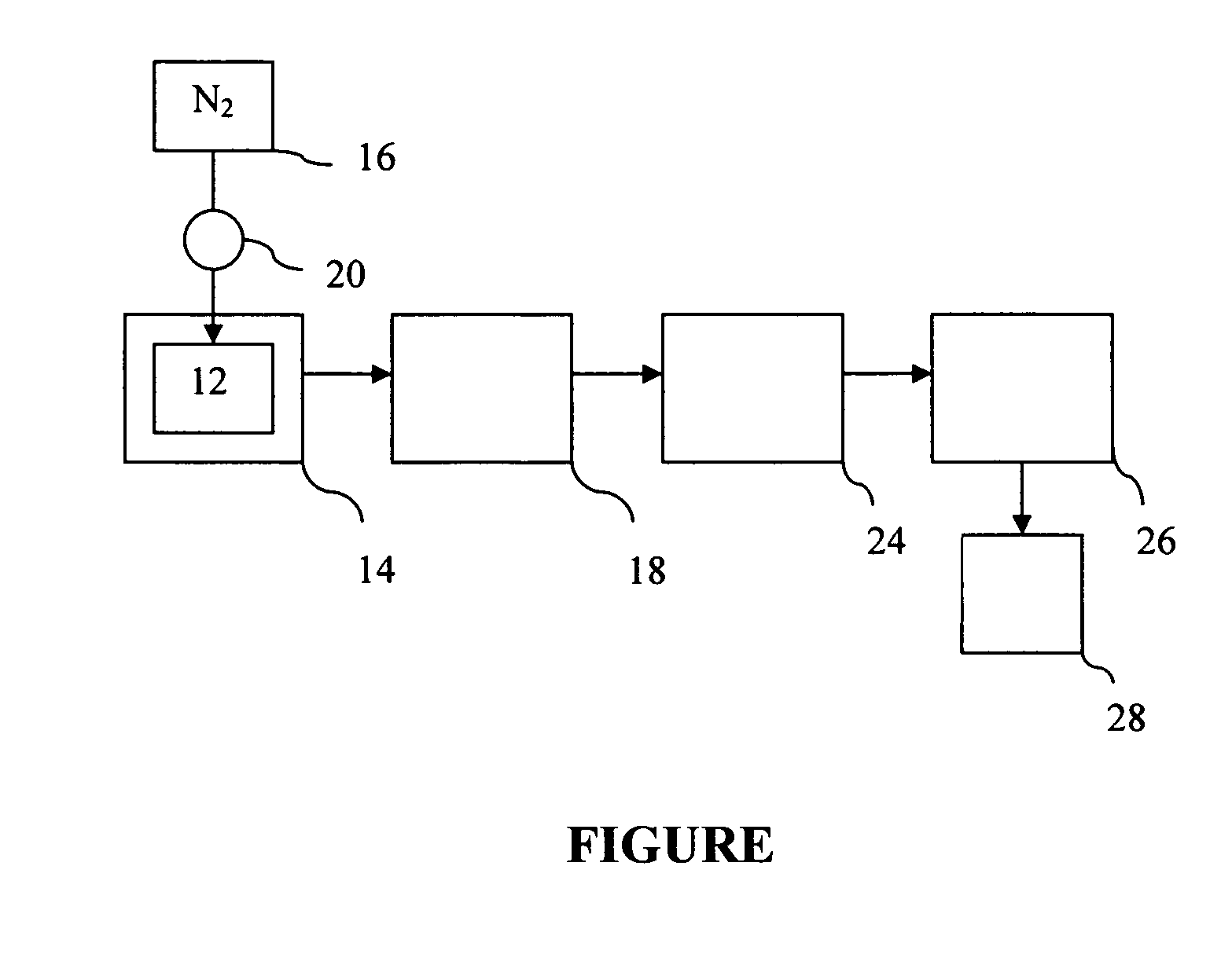Foaming soluble coffee powder containing pressurized gas
a technology of coffee powder and pressurized gas, which is applied in the field of instant dry beverage composition, can solve the problems of not always undesirable foam production of instant coffee, inability to easily make espresso coffee, and undesirable foam produced by spray-dried instant co
- Summary
- Abstract
- Description
- Claims
- Application Information
AI Technical Summary
Benefits of technology
Problems solved by technology
Method used
Image
Examples
example 1
[0038] 5 g of spray-dried soluble coffee powder having a glass transition temperature of 51° C. was placed in a 75 cc pressure vessel (stainless steel gas sampling cylinder; manufactured by Whitey Corporation; used in all examples herein except Example 8) and pressurized with 1000 psi nitrogen gas. The pressure vessel was placed in an oven at 80° C. for 2.5 hours. The pressure vessel was removed from the oven and cooled to room temperate under a stream of cold tap water. Subsequently, the cooled pressure vessel was opened to release pressure. The resulting powder was darker than the original spray-dried soluble coffee powder.
[0039] During the first few minutes after the removal of the powder from the pressure vessel, a small fraction of the coffee particles exploded with a loud cracking sound and were propelled out of the weighing dish in which they were placed. Prior to pressure treatment, the coffee powder had a bulk density of 0.21 g / cc, a tap density of 0.27 g / cc, a skeletal de...
example 2
[0044] Another 5 g gram sample of the spray-dried soluble coffee powder of Example 1 was placed in a 75 cc pressure vessel and pressurized with 1000 psi nitrogen gas at 25° C. for 5 minutes. The pressure vessel was opened to release pressure. The resulting powder had the same color, bulk density, and appearance as the untreated spray-dried soluble coffee powder.
[0045] During the first few minutes after the removal of the powder from the pressure vessel, a faint popping / cracking sound was heard but no particle explosions were visible. Prior to pressure treatment, the coffee powder had a skeletal density of 1.00 g / cc and an internal void volume of approximately 32%. After the present treatment, the coffee powder had a skeletal density of 1.25 g / cc and an internal void volume of approximately 15%. Internal void volumes were calculated using the method described above. The use of an equal weight of treated (i.e., containing pressurized gas) coffee powder in place of the untreated coffe...
example 3
[0048] The following table summarizes the results obtained when additional 5 g samples of the spray-dried soluble coffee powder of Example 1 were treated at the conditions listed according to the method of Example 1 when an equal weight of each treated coffee powder was substituted for the untreated coffee powder in the instant cappuccino mix of Example 1. This example demonstrates the combined effects of treatment time, temperature, and pressure on the relative foaming capacity of the coffee powder in the reconstituted cappuccino mix.
Approx-% Increase inimateCappuccinoTemper-InitialMaximumFroth HeightTimeaturePressurePressure(in 250 ml(minutes)(° C.)(psi)(psi)Gasbeaker)52510001000N23015060600700CO230906010001150N2402010510001300N2501506010001150N2601507010001200N27012080500600N2806010010001300N290609010001250N29012010010001300N2901508010001200N290
PUM
 Login to View More
Login to View More Abstract
Description
Claims
Application Information
 Login to View More
Login to View More - R&D
- Intellectual Property
- Life Sciences
- Materials
- Tech Scout
- Unparalleled Data Quality
- Higher Quality Content
- 60% Fewer Hallucinations
Browse by: Latest US Patents, China's latest patents, Technical Efficacy Thesaurus, Application Domain, Technology Topic, Popular Technical Reports.
© 2025 PatSnap. All rights reserved.Legal|Privacy policy|Modern Slavery Act Transparency Statement|Sitemap|About US| Contact US: help@patsnap.com

